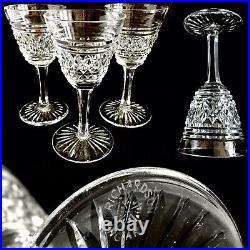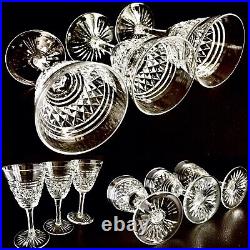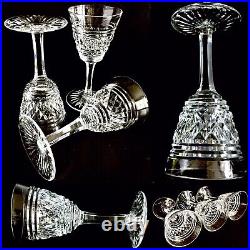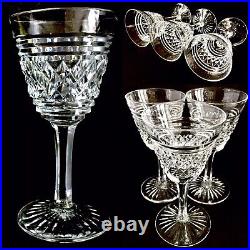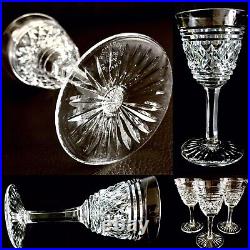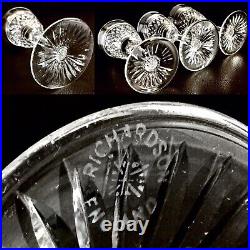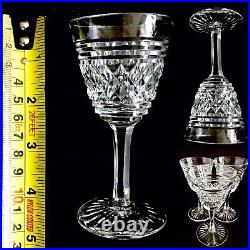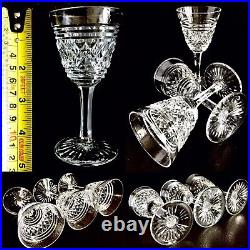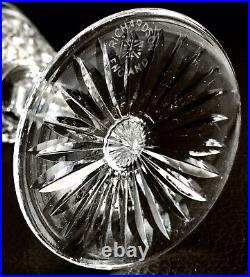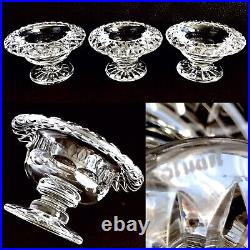

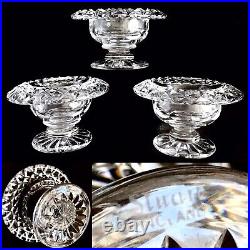
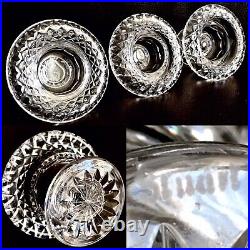
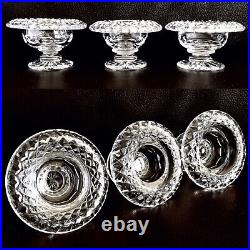
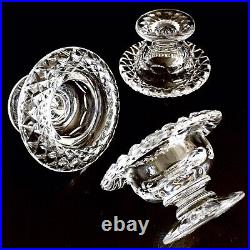
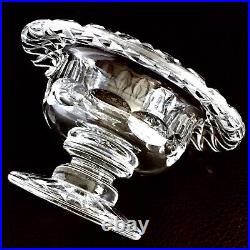
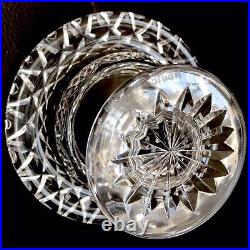
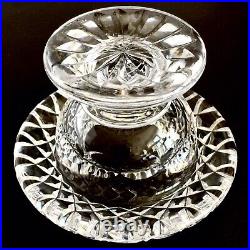
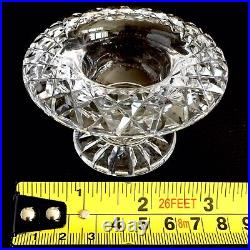



Superb Set of Three R are Vintage /Antique (1930s) English Stuart Crystal Candle Holders In Near Perfect Condition (3.5/9cm, 193g Each). If you’re looking for such items, you’d be very hard pressed to find too many better. Magnificent pieces of British lead crystal workmanship of the highest order. Please browse all 12 sets of photographs attached for size, weight and condition as they are self explanatory and they are an accurate description of the condition. Absolutely perfect without any chips or damage whatsoever. If you are extremely particular then I’d say there are very minor friction marks on the base but that apart, near perfect. From the 1800s until 2001, Stuart Crystal was the pride of generations of the Stuart family, starting with Frederick Stuart. In 1827, at the age of about 11, the orphaned Frederick Stuart went to work at the Red House Glassworks in Stourbridge in the British Midlands. At 24, Stuart left the Glassworks to seek his fortune as a glass salesman. Years later, he would return as the proprietor of The Red House. In 1853, Stuart entered into a 14-year partnership, forming the firm of Mills, Webb & Stuart. By the 1870s, the company (now Stuart and Mills) was a supplier of glassware to ocean liners. Subsequently, Stuart crystal stemware would be supplied for use aboard the White Star Line’s ill-fated “Titanic” in 1912. In 1881, Stuart proceeded with plans to launch a new business, Stuart & Sons, with his seven sons. The new company was launched in 1883, after his previous partnership, Stuart & Mills, expired in 1882. In a sense, Stuart’s career had come full circle, as he and his sons took over the Red House Glassworks where he had been apprenticed years before. Stuart retired in 1897, at the age of 82. He passed away in 1900. Stuart & Sons was incorporated as a limited company in 1911. In 1936, all glass production was transferred from the Red House factory to new facilities at White House Glassworks. The original glass works, a 110-foot-tall glass making cone, is now a museum where visitors can see how crystal was once manufactured there. In 1966, Stuart & Sons opened a new glass works factory in South Wales. The White House factory was demolished in 1979, and the following year, a new company was formed in Scotland, called Stuart Strathearn Glass. Glass production ceased altogether in 2001. As part of the Waterford Wedgwood group of companies, Stuart Crystal maintains a standard of product excellence, particularly in terms of design innovation for which it is well known. In the early 1900s, Robert Stuart (a son of the founder) was apparently instrumental in introducing art nouveau designs. Famous designers, Graham Sutherland and Paul Nash produced creative designs for Stuart Crystal during the 1930s, some of which were exhibited at Harrod’s department store. From 1949, John Luxton led a new generation of cutters in modern design concepts. Most recently, since 2005, Stuart Crystal has launched a nostalgic gift ware collection and headed along a new, creative path. This item is in the category “Pottery, Ceramics & Glass\Drinkware & Barware\Drinkware”. The seller is “santoor-uk” and is located in this country: GB. This item can be shipped worldwide.
- Number of Items in Set: Three-Piece
- Origin: UK
- Shape: Round
- Occasion: All Occasions
- Type of Glass: Crystal
- Custom Bundle: No
- Main Colour: Clear
- Year Manufactured: 1930s
- Glassmaking Technique: Hand Blown
- Maker: Stuart Crystal
- Colour: Clear
- Vintage: Yes
- Original/Licensed Reproduction: Original
- Glassware Era: 1930s
- Style: George V
- Features: Set of 3
- Production Style: Cut Glass
- Finish: Glossy
- Handmade: Yes
- Pattern: Unknown
- Item Diameter: 3.5”/9cm
- Material: Crystal
- Brand: Sturat Crystal
- Type: Candle Holder
- Original/Reproduction: Antique Original
- Theme: Traditional
- Time Period Manufactured: 1930-1939
- Backstamp: Etched
- Country/Region of Manufacture: United Kingdom
- Production Technique: Hand Blown Glass
- Glassware Type: Crystal/ Cut Glass
- Country of Origin: Britain
- Item Weight: 193g Each
- Product Line: Stuart Crystal



